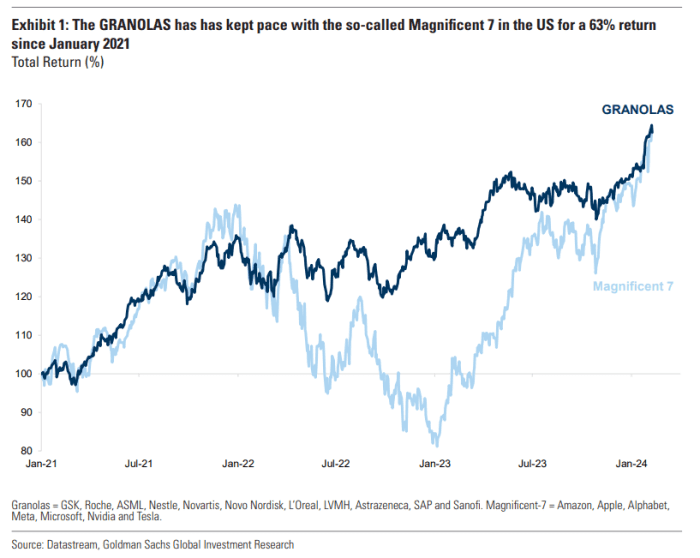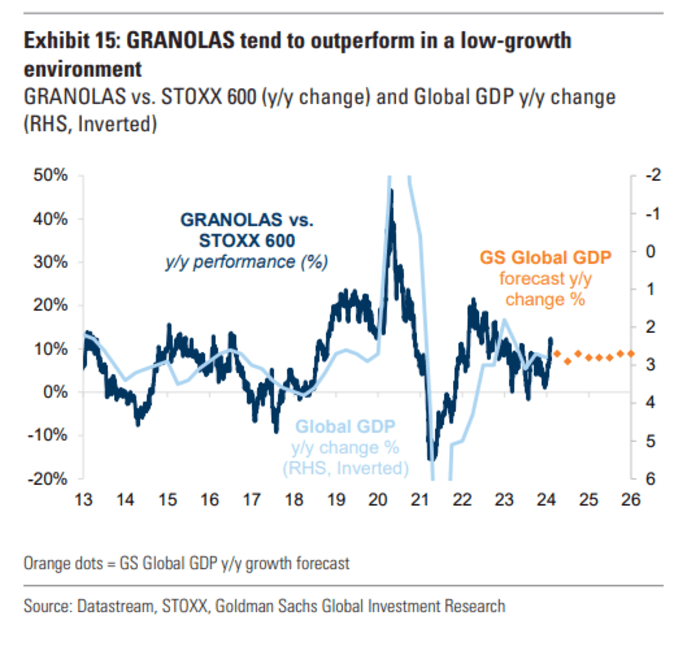For all the attention paid to the highflying tech giants dubbed the Magnificent Seven, there’s another grouping that has kept right up with them, and with a lot lower risk.
It’s called GRANOLAS, a term coined by Goldman Sachs during 2020 to refer to the largest European companies at that time: GSK GSK, +0.22%, Roche ROG, +0.98%, ASML ASML, +2.89%, Nestle NESN, +0.99%, Novartis NOVN, -1.31%, Novo Nordisk NVO, +2.37%, L’Oreal OR, +2.82%, LVMH MC, +0.47%, AstraZeneca AZN, -1.98%, SAP SAP, +0.22% and Sanofi SNY, -0.13%.
This chart shows, in total return terms since January 2021, that the GRANOLAS grouping has kept right up with the Magnificent Seven of Amazon.com AMZN, +2.71%, Apple AAPL, +0.41%, Alphabet GOOGL, +2.12%, Meta Platforms META, -0.40%, Microsoft MSFT, +1.56%, Nvidia NVDA, +3.58% and Tesla TSLA, +2.12%, with a 63% return, and volatility since 2018 that is on average twice was low.

They’re a lot cheaper than the Mag 7, trading at 20 times earnings versus 30, though the GRANOLAS are more expensive to the broader European market.
This grouping has had a strong fourth quarter reporting season, led by Novo Nordisk’s success with weight-loss drugs, and ASML’s surge of microchip-equipment making machines, although L’Oreal disappointed in part due to its struggles in China.
“In our view, the reason why this group of stocks trades at a premium to the market is that they offer strong (and predictable) growth,” said strategists led by Guillaume Jaisson.
They say the time to own the GRANOLAS is when global GDP growth is below 3%, which is what the bank expects over the next five years.

Perhaps surprisingly in a world stuffed with exchange-traded funds, Goldman has not created a fund to trade on its moniker, meaning investors who want exposure to the theme would have to buy each stock individually.
